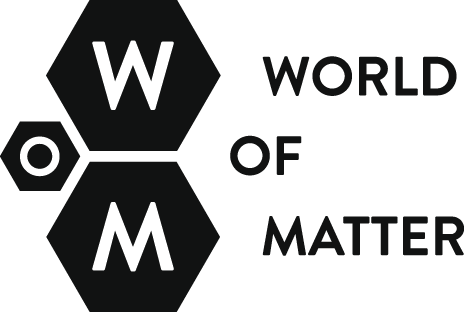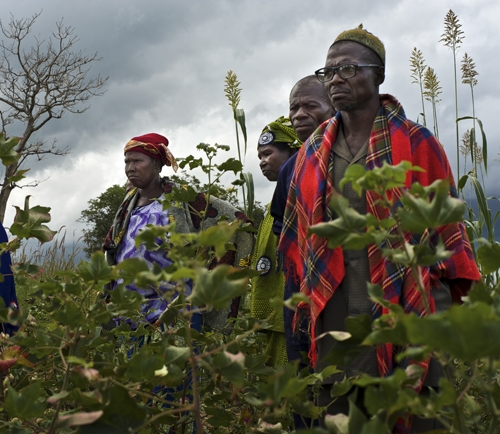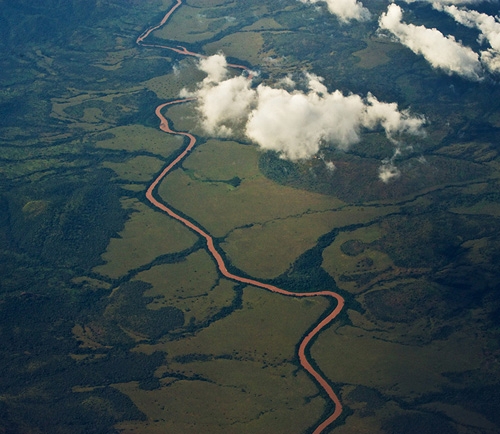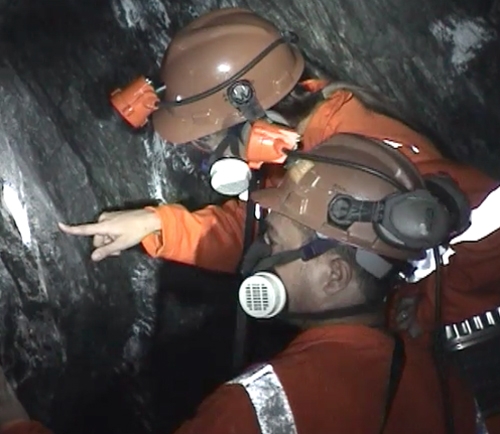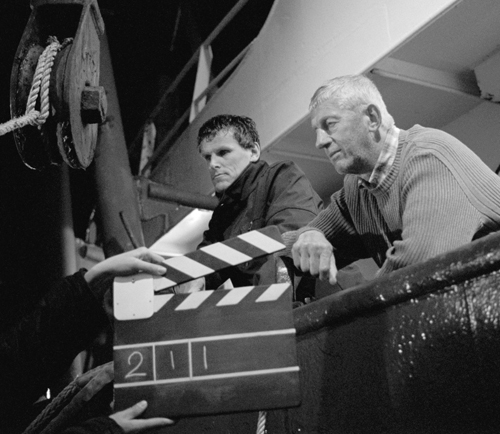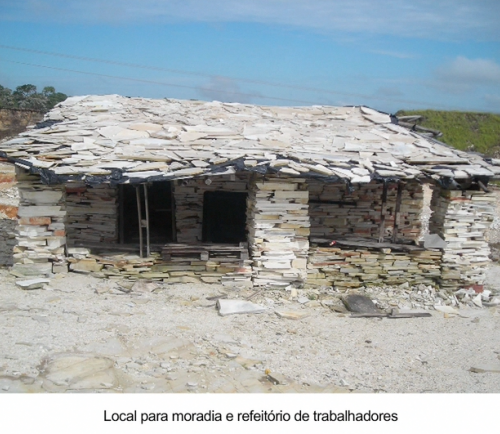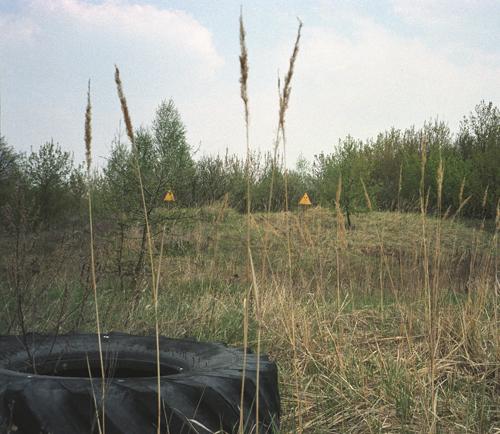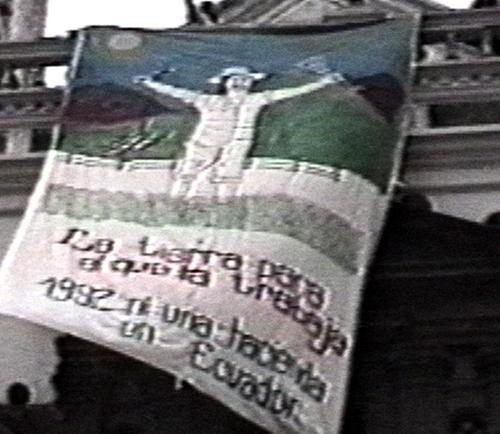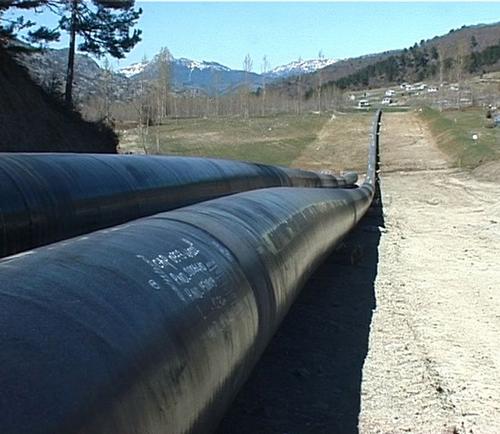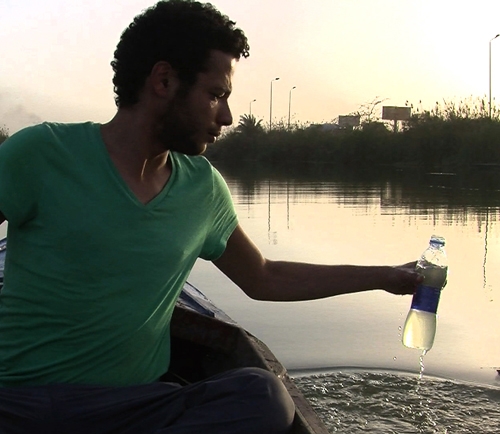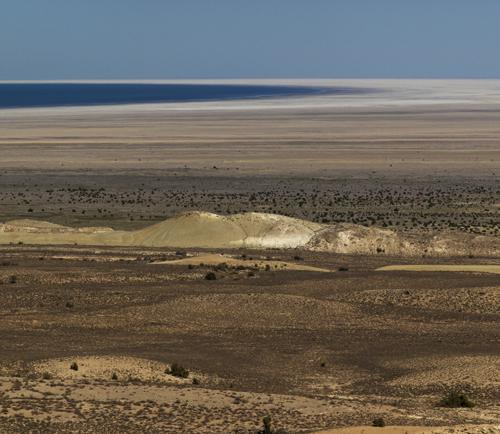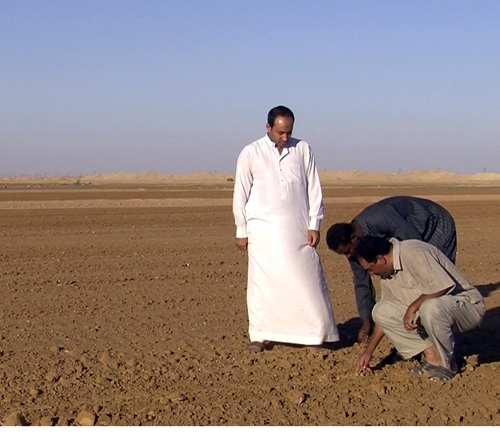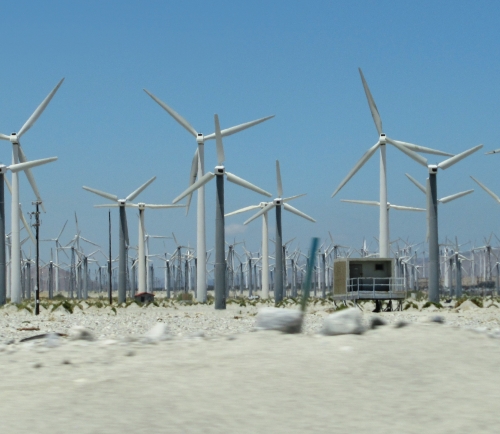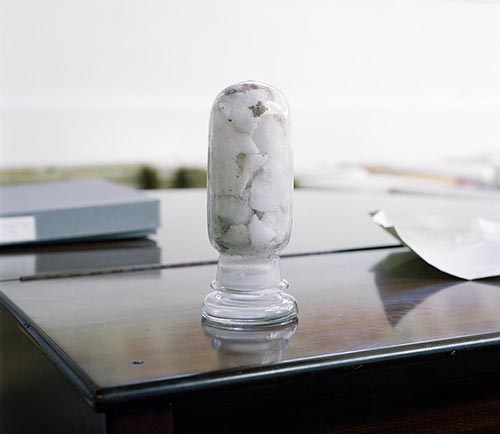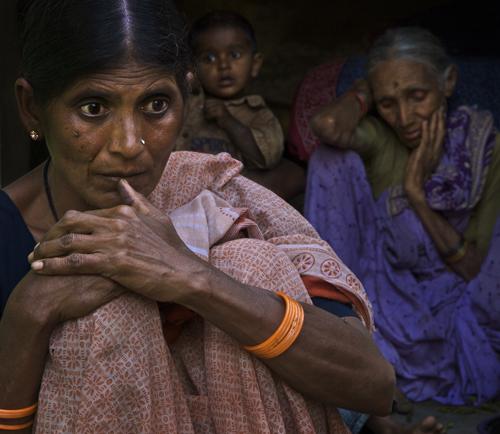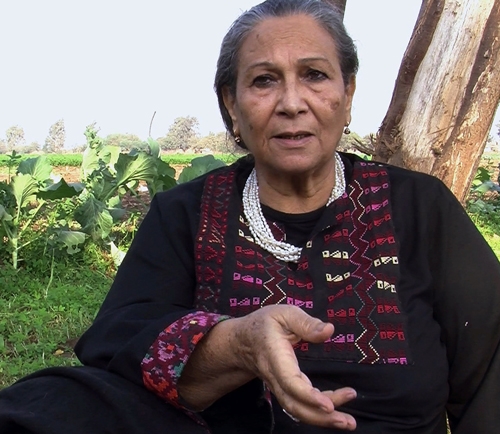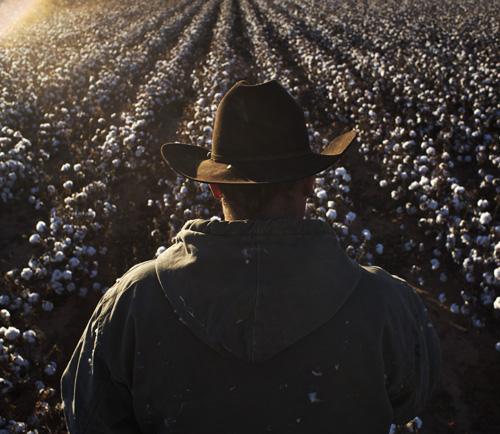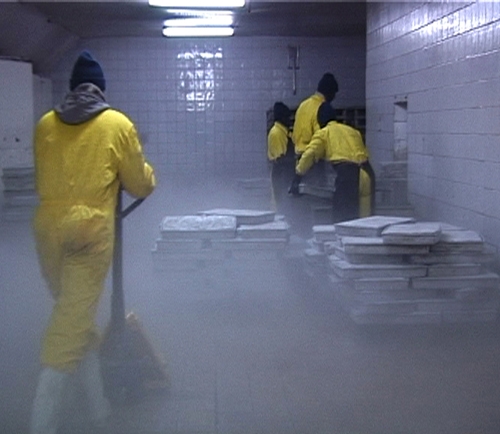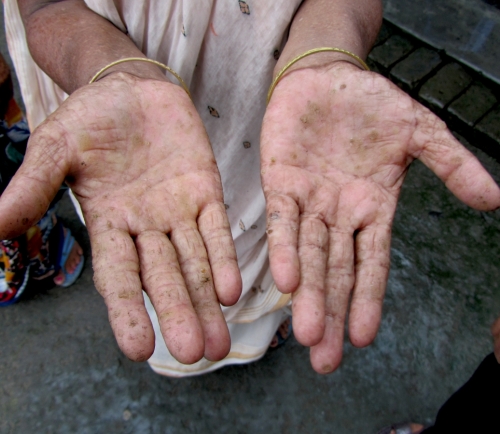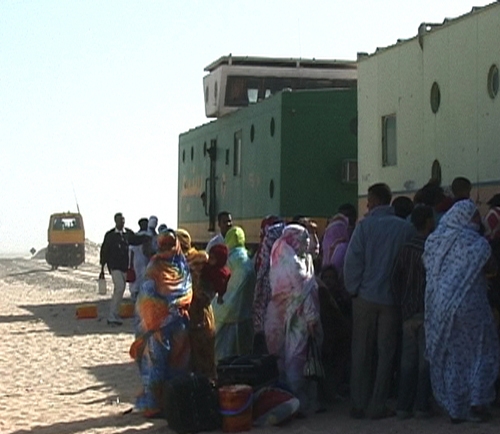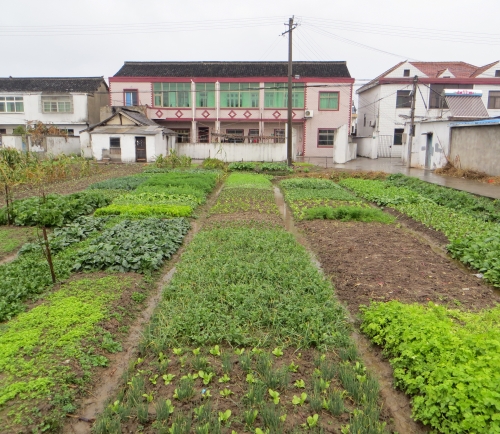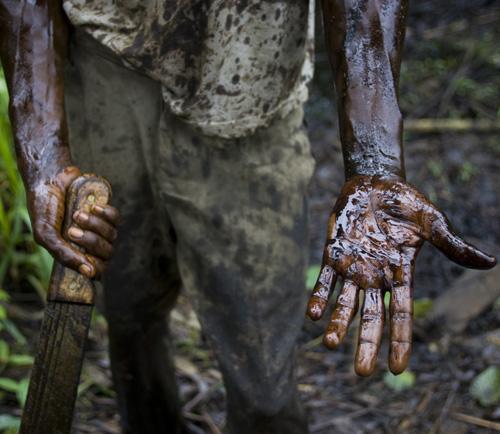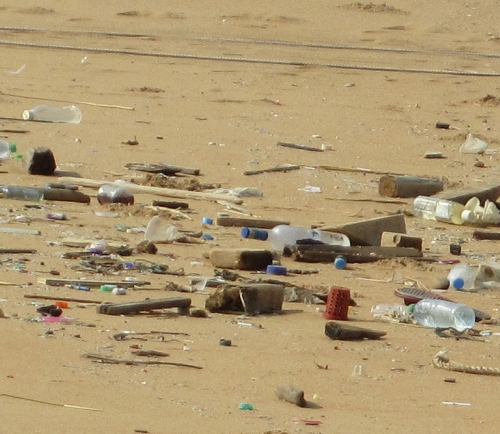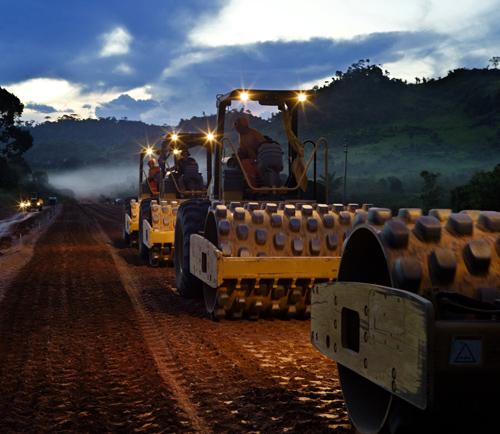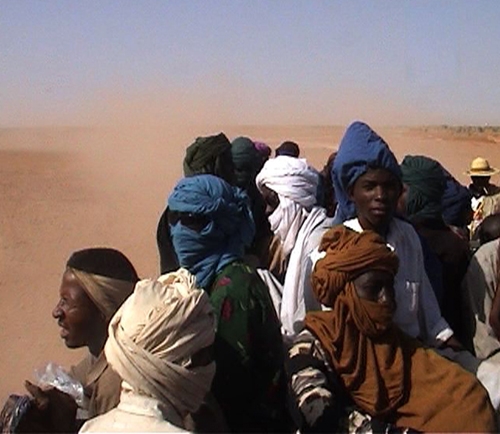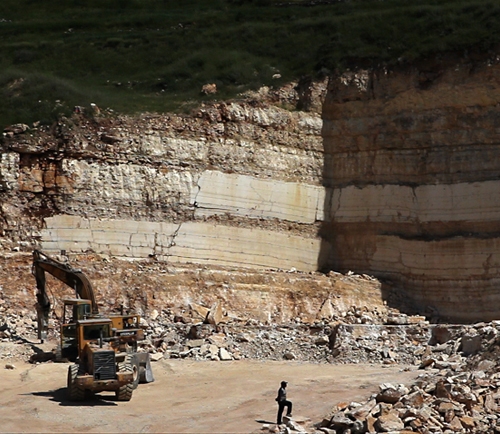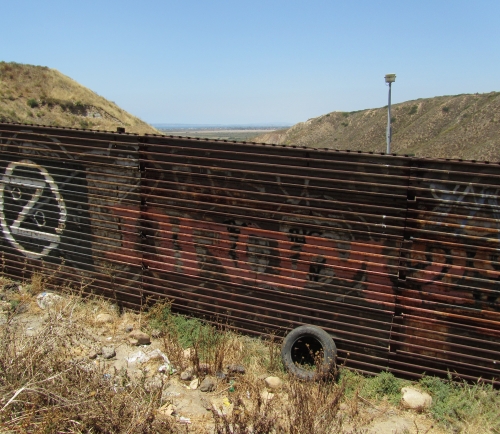World of Matter is a multimedia project Providing an open access archive on the global ecologies of resource exploitation and circulation
White Gold - Organic Dreams
In Burkina Faso cotton is the main export commodity in terms of value, generating income for approximately two million people in the country.
Read more...LandRush - The Farm
Gambela, a forlorn plot of land tucked away between the Ethiopian highlands and the vast expanse of South Sudan. Gambela—hot, humid, flat. Unchanged for centuries: Tribes leading their herds. Anuak, Nuer, Murle fighting for cattle, women, pastures. First with spears, now with kalashnikovs.
Read more...Mineral Invisibility
The art project engages the ever-changing reality of the fast-growing mining industry in Minas Gerais, Brazil. With new documents and in circulating existing ones, Material Invisibility examines the rapid but publicly silent consumption of landscapes and vital resources.
Read more...Episode of the Sea
Episode of the Sea is the result of a 2 year collaboration with the fishing community of the former island of Urk in the Netherlands.
Read more...Mineral Exploitation
A visual study on practices of work in mining, from XVI Century through the work De Re Metallica, de Georgius Agricola, to our days in Brazilian mines of Minas Gerais through images produced by the Brazilian Ministry of Work and Employment.
Read more...Chernobyl – Sounds of Contamination
Research into the aftermath of the 1986 Chernobyl nuclear disaster. More than 25 years later the exclusion zone is still in place. What has happened to the environment, nature, the region and the people directly affected since?
Read more...Non-human Rights
In the new Constitution of Ecuador (2008), Nature, as similar to human beings, is defined as a subject of law.
Read more...Black Sea Files
Territorial research on the Caspian oil geography during the construction phase of the BTC oil pipeline.
Read more...Egyptian Chemistry: Ecologies
Egyptian Chemistry III engages in the water ecologies of the Nile through interviews, water sampling and hydraulic modelling. It gives brief history of World Water Organisation and Muslim water laws.
Read more...White Gold – Dying Sea
Chemical use and excessive irrigation of cotton fields in Central Asia turned the fertile paradise of the Aral Sea into a chemically polluted salt desert. The decline continues in the south, where Uzbekistan forces its population to work the cotton fields. Read more...
Egyptian Chemistry: Agro-Sciences
Egyptian Chemistry is a multi-part video project on the water chemistry and agro-ecologies of the Nile. The first cluster discusses the water engineering of the Nile for various large-scale land reclamation projects.
Read more...Monument of Sugar
Monument of Sugar is a research into Europe’s subsidized sugar exports. To turn the flow of sugar around, the artists produced a sugar sculpture in Nigeria and shipped it to Europe.
Read more...Demiurgic Worlds
There is a growing tendency that resources are not conceived of as the object of planning but as planning itself.
Read more...Nitrate
Chilean sodium nitrate was extensively mined in northern Chile between the 1870s and 1920s. Traded mainly as a natural fertiliser, it was also used in the manufacture of explosives, making it a crucial ingredient for the acceleration of both life and death.
Read more...White Gold – Killing Seeds
More than 270,000 farmers committed suicide in India since 1995. The center of dying lies in Vidarbha located at the once wealthy cotton belt of central India. Read more...
Egyptian Chemistry: Land Reforms
Inscribed in the Egyptian agro-ecologies are countless histories – those of modernization, continuous land reforms, artificial fertilization, insect migration, peasant activism. These historiographies have a decentralizing impact.
Read more...White Gold – Texas Blues
Lubbock in Western Texas is known as the cotton capital of the world. No other place hosts such a density of cotton fields and is more efficient. To stay competitive on the world market, US farmers in recent years reduced high labor costs with the help of genetically modified cotton, heavy machinery and chemical control of the plants. Read more...
Sahara Chronicle – Atlantic
On the Atlantic coast, new migration systems are emerging as the Strait of Gibraltar is sealed off and border regimes change. Excessive fishing in the Mauritanian EEZ is affecting migration patterns.
Read more...Earth Poison
Earth poison is a research project that explores the place of law and diffused causality in the entanglement of environmental and political violence. In the first investigation presented for World of Matter the project follows large-scale groundwater arsenic poisoning in the Bengal Delta.
Read more...Sahara Chronicle – West
Trans-Saharan migrancy is organized into a network of ghettos, nodes and routes for land and sea movement. Due to the Moroccan desert wall in Western Sahara, migrants have to attempt fatal desert crossings, often ending up in deportation camps.
Read more...Resource Cities
What happens to entire landscapes full of resource deposits is directly dependent on the rhythms of urban demands and politics.
Read more...Black Gold
Since oil was discovered in the Niger Delta in 1956, over 400 billion dollars worth has been pumped out of these fertile grounds.
Read more...Ecological Capital
The propositional character of resources can serve as focal point of engagement for a number of critical practices intervening in the geopolitical circuits of value production via the development of a democratic politics – a proposition that enables larger spatial fields of efficacy to emerge aro
Read more...LandRush - Frontier Land
The soya highway connects the enormous farms in west Brazil to the Amazon harbor of Santarem. The road is the artery through which life flows into the region. In just forty years the road opened up the wilderness to commercial development which renders the land from forest to industrial.
Read more...Sahara Chronicle – Agadez
Agadez and Arlit in Niger are southern gates to the Sahara. The exclusion of the nomadic tribe from the mineral wealth on their territory triggered the Tuareg Rebellion in the 1990s.
Read more...White Oil
This field research examines the extraction and expropriation of stone from the quarries in the Occupied Palestinian Territories of the West Bank.
Read more...Conflict Matter
The power of capitalist abstraction operates under cover: it spreads via fragmentations, zonings, borderlines, crossings and penetrations.
Read more...| Image | Cluster |
|---|---|
Episode of the SeaEpisode of the Sea is the result of a 2 year collaboration with the fishing community of the former island of Urk in the Netherlands. |
|
Black Sea FilesTerritorial research on the Caspian oil geography during the construction phase of the BTC oil pipeline. |
|
NitrateChilean sodium nitrate was extensively mined in northern Chile between the 1870s and 1920s. Traded mainly as a natural fertiliser, it was also used in the manufacture of explosives, making it a crucial ingredient for the acceleration of both life and death. |
|
Non-human RightsIn the new Constitution of Ecuador (2008), Nature, as similar to human beings, is defined as a subject of law. |
|
Sahara Chronicle – AtlanticOn the Atlantic coast, new migration systems are emerging as the Strait of Gibraltar is sealed off and border regimes change. Excessive fishing in the Mauritanian EEZ is affecting migration patterns. |
|
Sahara Chronicle – WestTrans-Saharan migrancy is organized into a network of ghettos, nodes and routes for land and sea movement. Due to the Moroccan desert wall in Western Sahara, migrants have to attempt fatal desert crossings, often ending up in deportation camps. |
|
Egyptian Chemistry: Land ReformsInscribed in the Egyptian agro-ecologies are countless histories – those of modernization, continuous land reforms, artificial fertilization, insect migration, peasant activism. These historiographies have a decentralizing impact. |
|
Demiurgic WorldsThere is a growing tendency that resources are not conceived of as the object of planning but as planning itself. |
|
Chernobyl – Sounds of ContaminationResearch into the aftermath of the 1986 Chernobyl nuclear disaster. More than 25 years later the exclusion zone is still in place. What has happened to the environment, nature, the region and the people directly affected since? |
|
Mineral InvisibilityThe art project engages the ever-changing reality of the fast-growing mining industry in Minas Gerais, Brazil. With new documents and in circulating existing ones, Material Invisibility examines the rapid but publicly silent consumption of landscapes and vital resources. |
|
Egyptian Chemistry: Agro-SciencesEgyptian Chemistry is a multi-part video project on the water chemistry and agro-ecologies of the Nile. The first cluster discusses the water engineering of the Nile for various large-scale land reclamation projects. |
|
White Gold – Killing SeedsMore than 270,000 farmers committed suicide in India since 1995. The center of dying lies in Vidarbha located at the once wealthy cotton belt of central India. |
|
Black GoldSince oil was discovered in the Niger Delta in 1956, over 400 billion dollars worth has been pumped out of these fertile grounds. |
|
Ecological CapitalThe propositional character of resources can serve as focal point of engagement for a number of critical practices intervening in the geopolitical circuits of value production via the development of a democratic politics – a proposition that enables larger spatial fields of efficacy to emerge aro |
|
Egyptian Chemistry: EcologiesEgyptian Chemistry III engages in the water ecologies of the Nile through interviews, water sampling and hydraulic modelling. It gives brief history of World Water Organisation and Muslim water laws. |
|
White Gold – Dying SeaChemical use and excessive irrigation of cotton fields in Central Asia turned the fertile paradise of the Aral Sea into a chemically polluted salt desert. The decline continues in the south, where Uzbekistan forces its population to work the cotton fields. |
|
White Gold – Texas BluesLubbock in Western Texas is known as the cotton capital of the world. No other place hosts such a density of cotton fields and is more efficient. To stay competitive on the world market, US farmers in recent years reduced high labor costs with the help of genetically modified cotton, heavy machinery and chemical control of the plants. |
|
Sahara Chronicle – AgadezAgadez and Arlit in Niger are southern gates to the Sahara. The exclusion of the nomadic tribe from the mineral wealth on their territory triggered the Tuareg Rebellion in the 1990s. |
|
Mineral ExploitationA visual study on practices of work in mining, from XVI Century through the work De Re Metallica, de Georgius Agricola, to our days in Brazilian mines of Minas Gerais through images produced by the Brazilian Ministry of Work and Employment. |
|
Monument of SugarMonument of Sugar is a research into Europe’s subsidized sugar exports. To turn the flow of sugar around, the artists produced a sugar sculpture in Nigeria and shipped it to Europe. |
|
Resource CitiesWhat happens to entire landscapes full of resource deposits is directly dependent on the rhythms of urban demands and politics. |
|
White OilThis field research examines the extraction and expropriation of stone from the quarries in the Occupied Palestinian Territories of the West Bank. |
|
LandRush - The FarmGambela, a forlorn plot of land tucked away between the Ethiopian highlands and the vast expanse of South Sudan. Gambela—hot, humid, flat. Unchanged for centuries: Tribes leading their herds. Anuak, Nuer, Murle fighting for cattle, women, pastures. First with spears, now with kalashnikovs. |
|
White Gold - Organic DreamsIn Burkina Faso cotton is the main export commodity in terms of value, generating income for approximately two million people in the country. |
|
LandRush - Frontier LandThe soya highway connects the enormous farms in west Brazil to the Amazon harbor of Santarem. The road is the artery through which life flows into the region. In just forty years the road opened up the wilderness to commercial development which renders the land from forest to industrial. |
|
Conflict MatterThe power of capitalist abstraction operates under cover: it spreads via fragmentations, zonings, borderlines, crossings and penetrations. |
|
Earth PoisonEarth poison is a research project that explores the place of law and diffused causality in the entanglement of environmental and political violence. In the first investigation presented for World of Matter the project follows large-scale groundwater arsenic poisoning in the Bengal Delta. |
